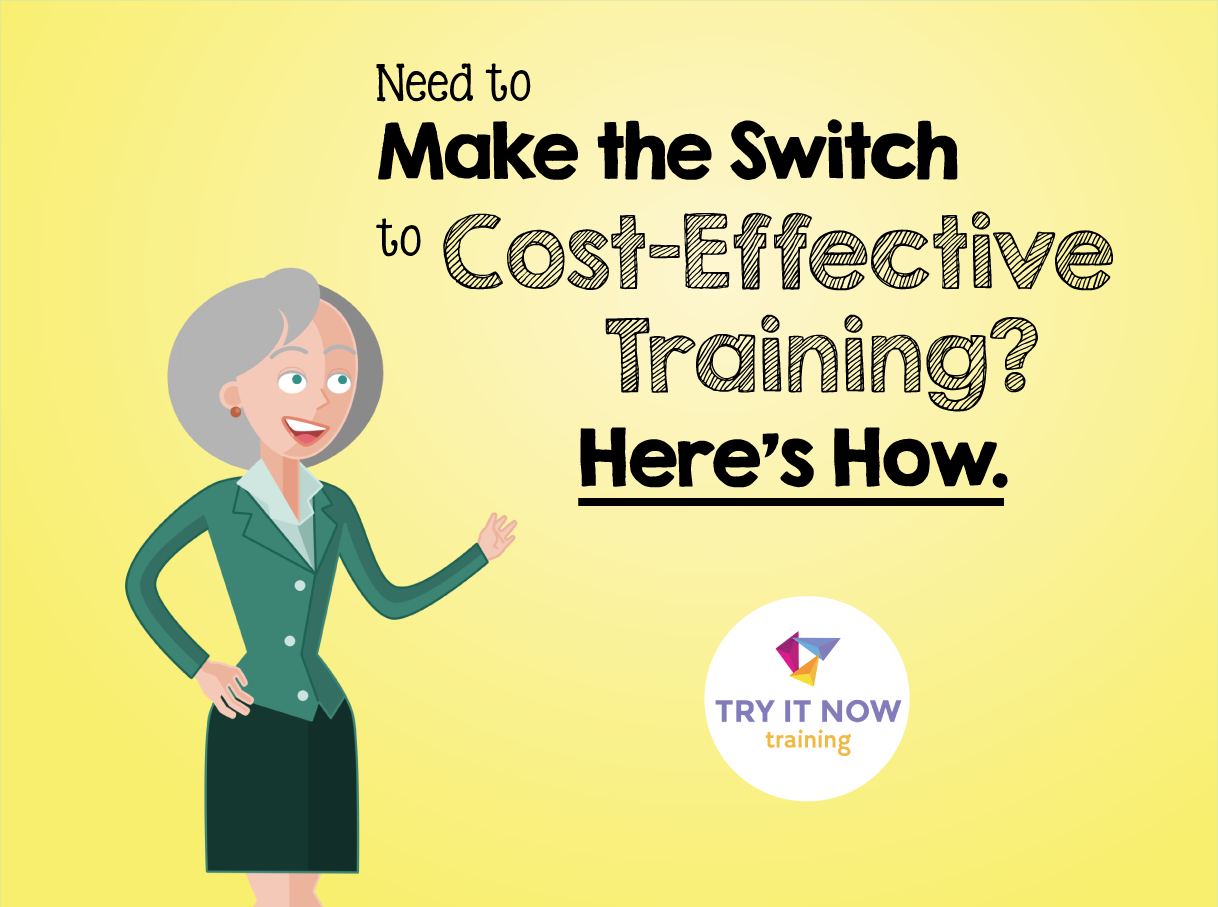
Need to Make the Switch to Cost-Effective Training? Here’s How!
While ILT is still useful, especially when used in conjunction with technology, eLearning can be just as effective and in many instances more cost-efficient. Reducing the cost is a fantastic benefit, but it isn’t the only reason to consider the transition to eLearning. According to a recent report, 40 percent of all Fortune 500 companies now use eLearning. Additionally, 72 percent report cost-effective savings such as:
- Efficiency – Taking less time away from an employee’s workday, as eLearning takes up to 40-60% less time than classroom instruction.
- Scalability – even if the training is delivered at different times or in different facilities, you can still reach your entire audience with one training.
- ROI – by using eLearning strategies that resonate with the learners (like gamification, microlearning, or story-based learning), retention rates are higher, which means a higher return on investment for employers. In addition, reduced travel costs result in a greater return on your training investment.
Considerations Before Making the Switch
Making the switch from an old tried-and-true training method to something new is exciting, yet nerve-wracking. How can you be sure that it will go over well? Here are some factors to consider that can help you decide if this the right move for you.
Company Size and Number of Learners – The size of your company impacts the amount of money spent on training. A State of the Industry report from 2014 concluded the following with regards to company size and average per person training cost:
| Company size | Total training spent per employee |
| <500 employees | $1,888 |
| >500 employees | $838 |
Both small and mid-size companies devote approximately 27 hours annually to training. Larger companies with 10,000+ employees spend more time on training (36 hours), but less money per employee.
The good news about transitioning your ILT trainings to an eLearning platform is that you already have material that you need to get started. However, keep in mind that the transition should be more involved than simply converting a PowerPoint deck into an online format. Remember that in addition to being cost-effective, you want your employees to retain the information.
So how do you begin? The best place to start is by asking a few basic questions:
- What is working with your current training?
- What needs improvement?
- What could be done to make the learning experience even better?
Development Costs – As you are analyzing your current material, you might ask – How much will all this cost? That depends on several factors:
- How big is the project? Project size could be due to several things like the amount of graphics and animation, customization, or the total audio run time. These all impact the number of hours and different roles required to complete the project.
- How complex is it? Does your project require high-quality video or animations? Does it require interactivity to keep learners engaged and target key objectives? Since eLearning is such a collaborative process, it is important to communicate your expectations, including desired complexity levels, upfront to help keep charges to a minimum.
These factors along with your source content and number of revision cycles can impact the cost.
Choosing the Right Vendor Matters
The overall cost and quality can also depend on the vendor you choose to work with. And selecting the right one really does matter. Here’s why:
- A consultant agency that specializes in eLearning products can help you through ALL the phases of development. Developing in-house training may take your staff away from their key roles, plus if they are not accustomed to developing eLearning, it may take much longer than a consultant.
- An eLearning consultant can help you determine which eLearning products will be most effective for your educational strategy.
- A knowledgeable eLearning vendor understands how various media types and interactivity models can impact different learner outcomes and can help you figure out which strategies are most effective for your training.
- An experienced eLearning developer saves you time in the long run because there will be fewer errors and fewer edits to deal with.
So, while it may seem less expensive to create the eLearning training in-house, or go with the vendor who comes in at the lowest price, this is not always the case. If you stay in-house, will the quality be what you need? Will you have to pull employees from other valuable projects? Will you need to purchase equipment or software to complete the project?
If you outsource the work, make sure to do your homework. Find out some background information on the company you choose to create the project. Do they specialize in eLearning products?
You can also ask to see some samples or request referrals. Remember, at the end of the day, you want your CFO to be pleased with your budget proposal. If you have to request more money to cover unexpected issues along the way, training could turn into a nightmare!

Leave A Comment